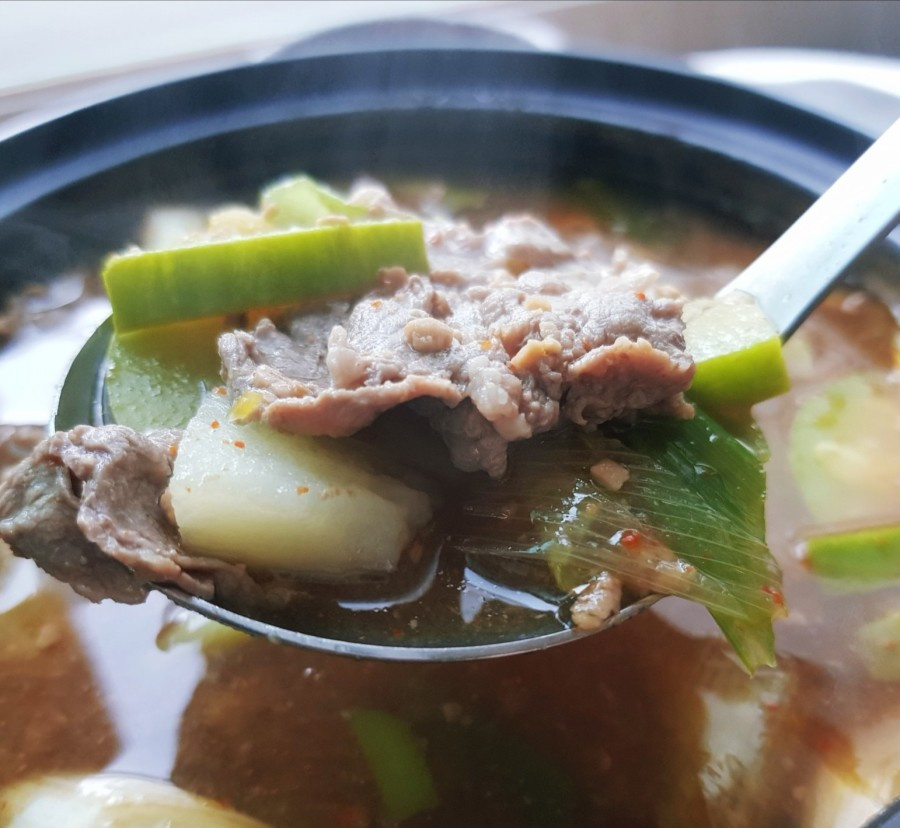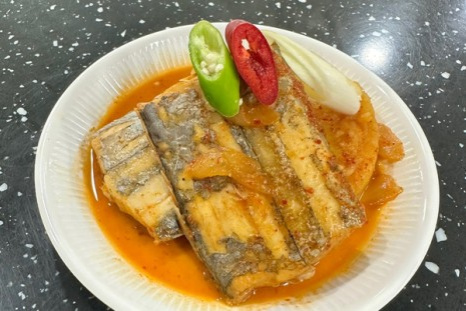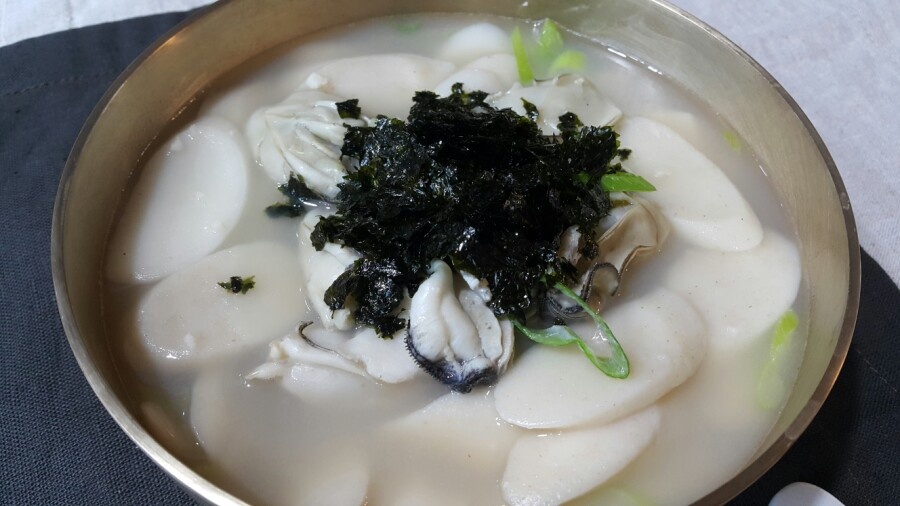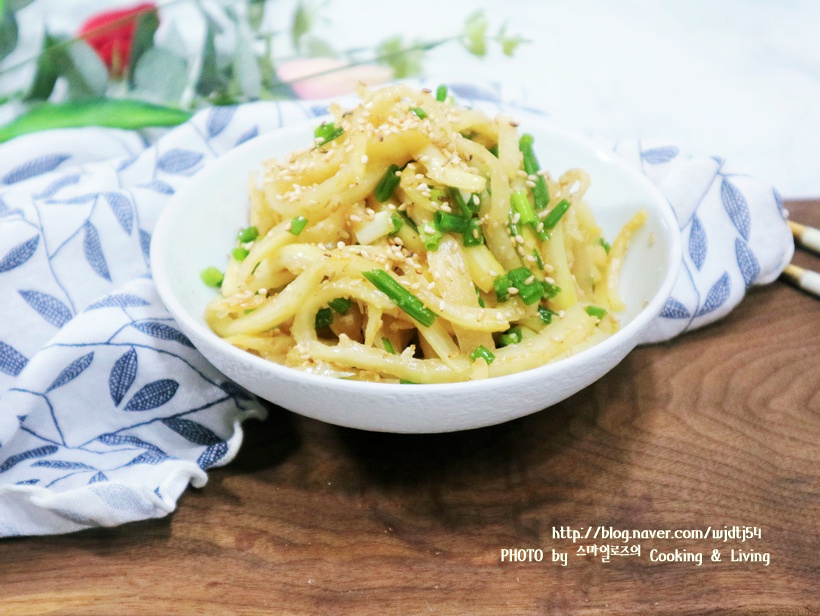Clear and Refreshing Beef and Potato Doenjang Jjigae
The Best Way to Make Delicious Beef and Potato Doenjang Jjigae with Just Doenjang for a Clean Taste

Seasoned cleanly with only doenjang and using minimal ingredients, this beef and potato doenjang jjigae is made to be refreshing. Try simmering it with thinly sliced, tender beef for an even richer flavor.
Jjigae Ingredients- Thinly sliced beef (for shabu-shabu or stew) 200g
- 1 large potato
- 1/3 Korean zucchini (aehobak)
- 1 stalk green onion
- 2 Korean chili peppers (cheongyang peppers)
- 1 liter water
- 5 sheets of dried kelp (4×4 cm)
- 1/2 handful of dried anchovies for broth
Seasoning (measured with a rice spoon)- 2.5 heaping rice spoons of doenjang (fermented soybean paste)
- 0.5 to 1 rice spoon of red chili powder (gochugaru), to taste
- 2.5 heaping rice spoons of doenjang (fermented soybean paste)
- 0.5 to 1 rice spoon of red chili powder (gochugaru), to taste
Cooking Instructions
Step 1
First, let’s make the broth, which is the foundation for a delicious doenjang jjigae. Pour 1 liter of rice water into a Korean earthenware pot (ttukbaegi). Add 5 sheets of 4×4 cm dried kelp and half a handful of dried anchovies for broth. Turn the heat to high and bring to a boil. Once boiling, reduce the heat to medium, remove the kelp immediately, and let it simmer for another 10 minutes. Then, remove the anchovies to create a clean-tasting broth.

Step 2
Pat the thinly sliced beef, prepared for shabu-shabu, dry with paper towels to remove excess blood. Removing the blood is key to a clean-tasting jjigae without any gamey odor. (You can also use beef brisket or stew meat, or thinly sliced beef for bulgogi.)

Step 3
To prevent the potatoes from breaking apart too easily in the stew, slice them slightly thicker than bite-sized. Soak the sliced potatoes in cold water to remove excess starch. This step helps keep the broth from becoming cloudy and results in a clearer jjigae.

Step 4
Slice the Korean zucchini into bite-sized pieces, similar in size to the potatoes. Slice the green onion and Korean chili peppers diagonally for an appealing look. If you prefer a spicier kick, feel free to adjust the amount of chili peppers.

Step 5
Add the blood-removed beef and the starch-rinsed potatoes to the simmering broth over medium heat. Once the broth comes back to a boil, add the prepared Korean zucchini. Skim off any foam that rises to the surface and let it simmer for about 5 minutes. This process will enhance the umami flavors derived from the ingredients.

Step 6
Now it’s time to dissolve the doenjang and season the jjigae. Since doenjang brands vary in saltiness, start by adding 2.5 heaping rice spoons and taste. Adjust the amount as needed. Avoid stirring too vigorously, as this can make the jjigae taste coarse; stir gently until the doenjang is dissolved without lumps.

Step 7
After seasoning with doenjang, add the sliced green onions and Korean chili peppers, and let it simmer for just a little longer. Finally, add red chili powder according to your preference to enhance the spiciness and color. Your delicious beef and potato doenjang jjigae is now complete.

Step 8
Have you noticed that this recipe for beef doenjang jjigae differs slightly from the one you might usually make? Typically, many people stir-fry beef and radish before adding water mixed with doenjang and gochujang, then tossing in the vegetables. However, try making it this way today – you’ll discover a different kind of charm!

Step 9
While traditional beef doenjang jjigae offers a deep, rich flavor, it can sometimes feel a bit heavy. However, by following this recipe, you can enjoy a doenjang jjigae that highlights the natural flavors of the ingredients, resulting in a clear, refreshing, and non-greasy stew that’s gentle on the stomach. It’s a true rice-lover’s delight!




